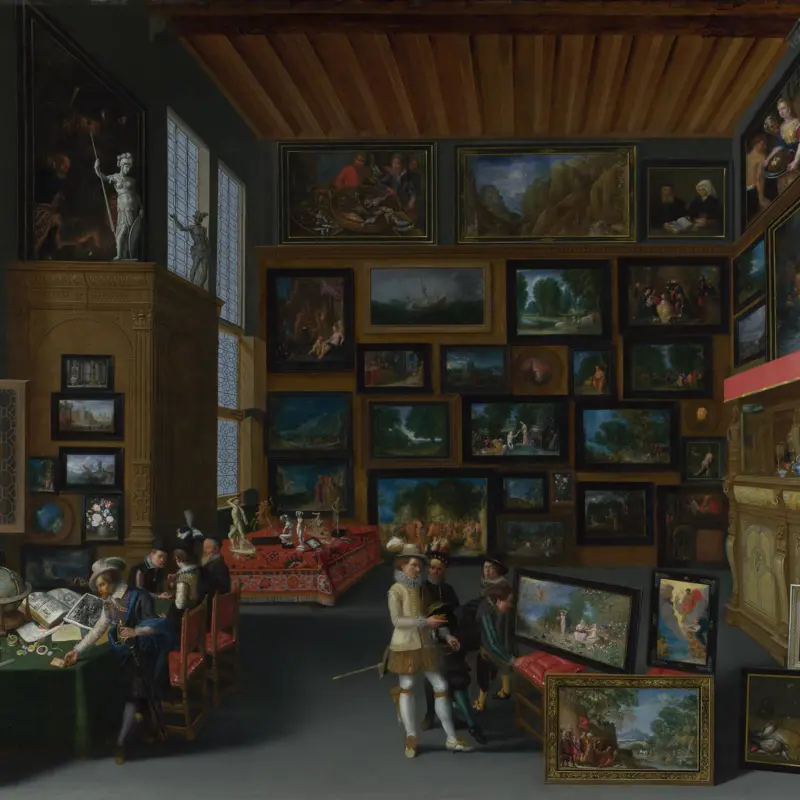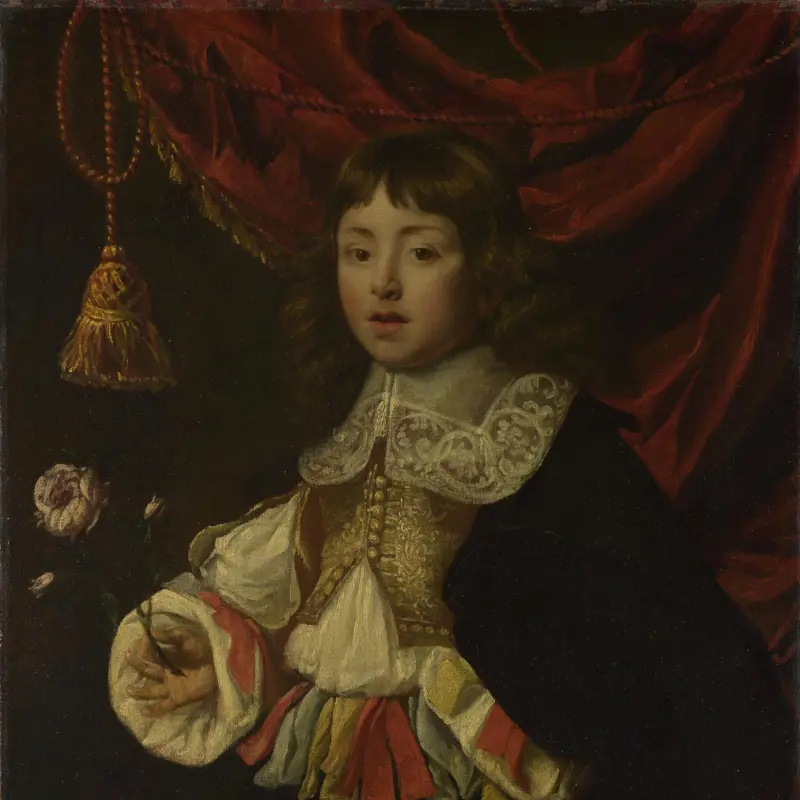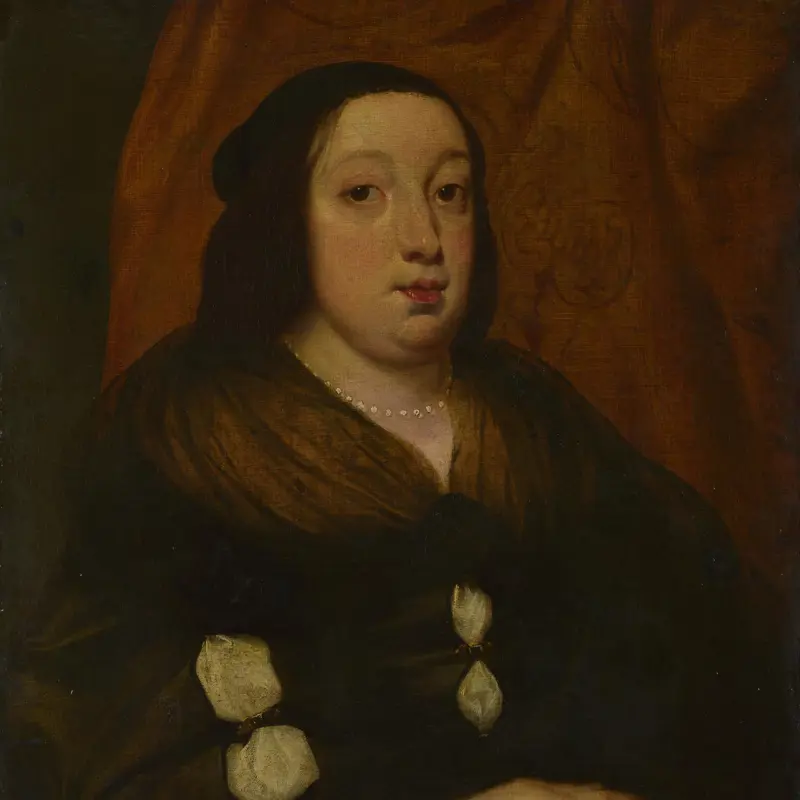Flemish, 'Portrait of a Man', 1636
About the work
Overview
An unidentified young man looks out at us with a direct gaze. Painted by an unknown artist, he is shown leaning against a stone archway covered with a swathe of white satin curtain. His expensive lace collar and cuffs are well displayed. His youth is emphasised by his sparse moustache and wisp of a beard, and the brim of an enormous hat encircles his long, pale face. He holds leather gloves – an expensive luxury – in one hand; with the other, he gestures as if inviting us in towards him.
Beside the young man is a stone relief that shows one cupid, his arrow raised to strike a second, blindfolded cupid. The scene symbolises the triumph of ‘Divine Love’ over ‘Earthly Love’ and makes it likely that the portrait was painted to celebrate the sitter’s betrothal or marriage.
Key facts
Details
Provenance
Additional information
Text extracted from the ‘Provenance’ section of the catalogue entry in Gregory Martin, ‘National Gallery Catalogues: The Flemish School: circa 1600–circa 1900’, London 1986; for further information, see the full catalogue entry.
Exhibition history
-
2008Long Loan to the Rubenshuis (2008 - 2014)Rubenshuis19 November 2008 - 11 September 2014
-
2011Palazzo Rubens: The Master as ArchitectRubenshuis10 September 2011 - 11 December 2011
Bibliography
-
1955The National Gallery, The National Gallery: 1938-1954, London 1955
-
2001
C. Baker and T. Henry, The National Gallery: Complete Illustrated Catalogue, London 2001
About this record
If you know more about this work or have spotted an error, please contact us. Please note that exhibition histories are listed from 2009 onwards. Bibliographies may not be complete; more comprehensive information is available in the National Gallery Library.






